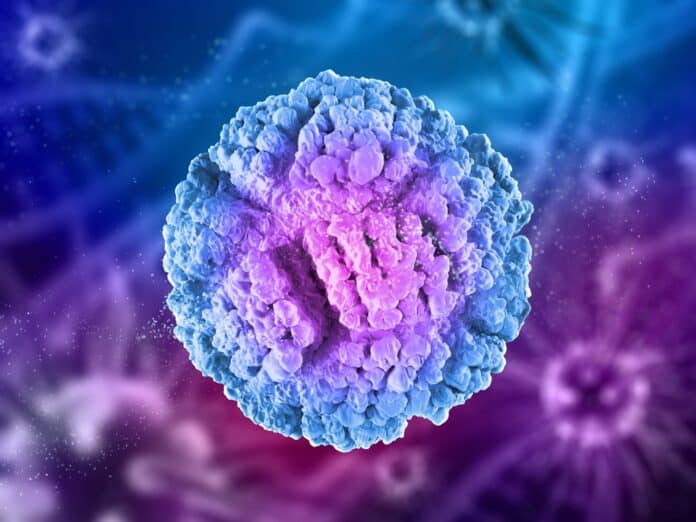Current CRISPR-Cas9 models can expand this proportion but are limited by error-prone DNA repair, whereas genetically modified mice models only capture a small portion of the genetic defects that cause human cancer.
Thousands of mutations associated with tumor formation have been discovered in cancer patients’ genomes. However, for the great majority of those mutations, experts are unaware of how they contribute to cancer because there is no practical way to investigate them in animal models.
MIT scientists developed a method for efficiently engineering specific cancer-linked mutations into mouse models. Such models help researchers discover and test novel medications that target specific alterations.
The researchers used CRISPR genome-editing technology to build models that included several different mutations of the cancer-causing gene Kras in various organs. They believe this technique might be used for practically any other form of cancer mutation discovered.
Tyler Jacks, the David H. Koch Professor of Biology, a member of the Koch Institute for Integrative Cancer Research at MIT, and one of the senior authors of the new study, said, “This is a remarkably powerful tool for examining the effects of essentially any mutation of interest in an intact animal and in a fraction of the time required for earlier methods.”
Cancer treatments must be tested in mouse models to see whether they are safe and effective for human clinical trials.
Over the last two decades, researchers have used genetic engineering to create mouse models by deleting tumor suppressor genes or activating cancer-promoting genes. However, this method is time-consuming and can take months or even years to produce and analyze mice with a single cancer-linked mutation.
Ely said, “A graduate student can build a whole Ph.D. around building a model for one mutation,” “With traditional models, it would take the field decades to catch up to all of the mutations we’ve discovered with the Cancer Genome Atlas.”
Faster editing is an essential step in establishing if cancer treatments are secure and efficient enough to enter human clinical trials to test them first on mice models of the disease. Researchers started looking into the possibility of more quickly creating malignant mutations using the CRISPR genome-editing method in the middle of the 2010s.
Sánchez-Rivera and his colleagues demonstrated that they could swiftly employ CRISPR to knock out genes frequently deleted in cancers in Jack’s lab. This method relies on the cell’s DNA repair systems, continually introducing errors. Hence it is not suitable for introducing new mutations into a gene.
Inspired by research from Liu’s lab at the Broad Institute, the MIT team wanted to develop a way to perform more precise gene editing that would allow them to make very targeted mutations to either oncogene (genes that drive cancer) or tumor suppressors.
In 2019, Liu and colleagues showed prime editing, a new type of CRISPR genome editing that employs a modified enzyme called Cas9 nickase linked to another enzymes called reverse transcriptase.
This fusion enzyme only cuts one strand of the DNA helix, avoiding the introduction of double-stranded DNA breaks, which might cause errors when the cell repairs the DNA.
The MIT researchers created these novel mouse models by inserting the gene for the prime editor enzyme into the mice’s germline cells. Cells use this enzyme to convert an RNA sequence into DNA incorporated into the genome.
The primary editing system is placed in the mouse genome, allowing researchers to initiate tumor growth by injecting Cre recombinase into the tissue where a cancer mutation is desired to be produced, combined with a guide RNA that guides Cas9 nickase to make a precise edit in the cells’ genome.
To highlight the technique’s potential, the researchers created many distinct mutations in the Kras gene, which is responsible for approximately 30% of all human malignancies, including nearly all pancreatic adenocarcinomas.
Many Kras mutations occur at G12, which contains the amino acid glycine, which can be transformed into one of several alternative amino acids depending on the mutation.
The scientists created models of four distinct Kras mutations found in lung cancer: G12C, G12D, G12R, and G12A. They discovered that the tumors formed in each model had extremely diverse characteristics.
Researchers may be able to design treatments that target each of the individual mutations if they learn more about how these mutations affect tumor development differently. There are currently just two FDA-approved Kras mutant medications, both of which are specific to the G12C variant.
Mathey-Andrews said, “One thing that we’re excited about is looking at combinations of mutations, including Kras mutations that drive tumorigenesis, along with resistance-associated mutations; we hope that will give us a handle on not just whether the mutation causes resistance but what a resistant tumor look like?”
The researchers are also developing models of new Kras mutations and other mutations that contribute to resistance to Kras inhibitors. They expect that additional labs will start using this technology to study cancer mutations.
The research was funded by the Ludwig Center at MIT, the National Cancer Institute.
Journal Reference:
- Ely, Z.A., Mathey-Andrews, N., Naranjo, S., et al. A prime editor mouse to model a broad spectrum of somatic mutations in vivo. Nature Biotechnology. DOI: 10.1038/s41587-023-01783-y
